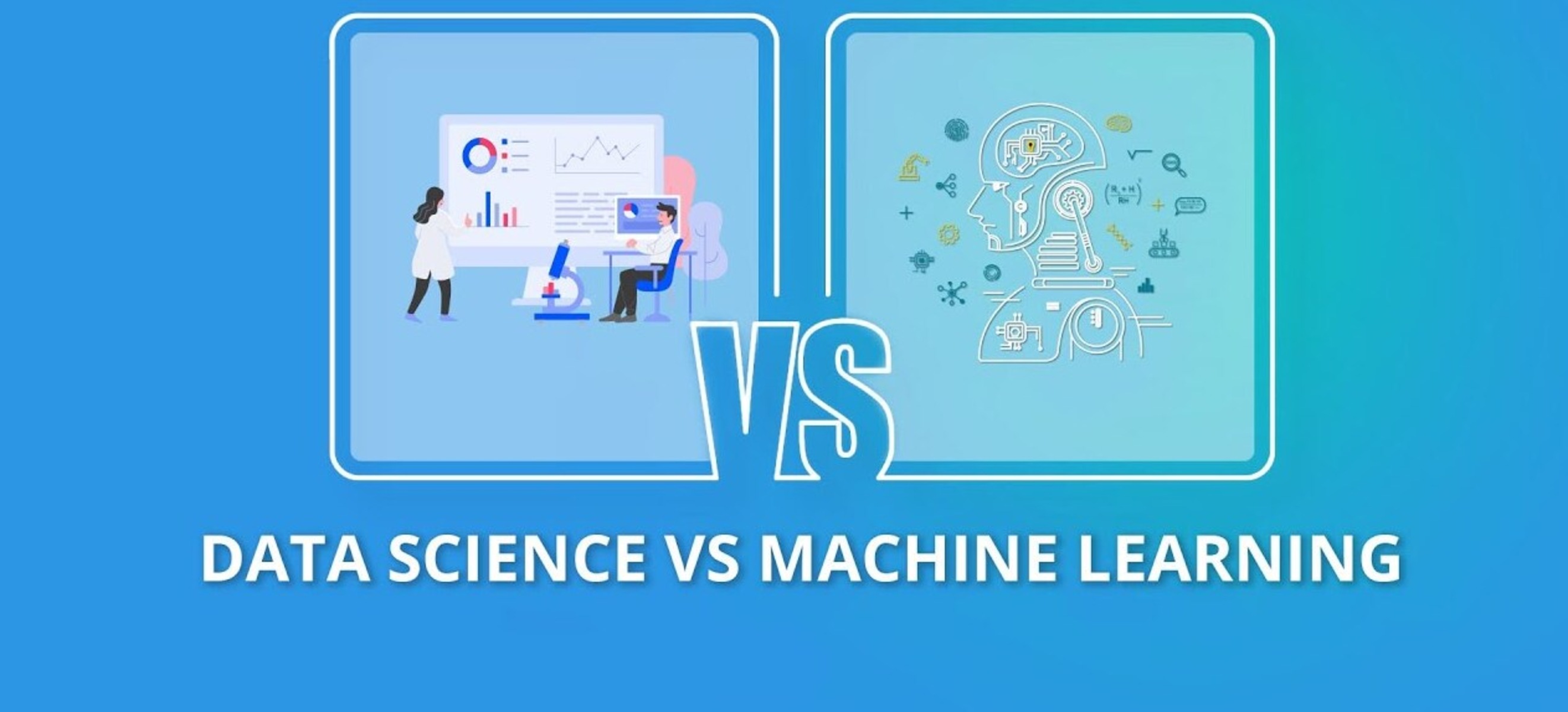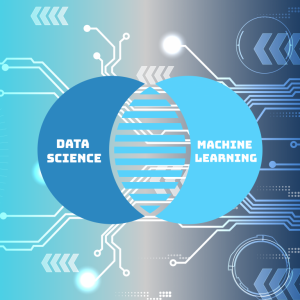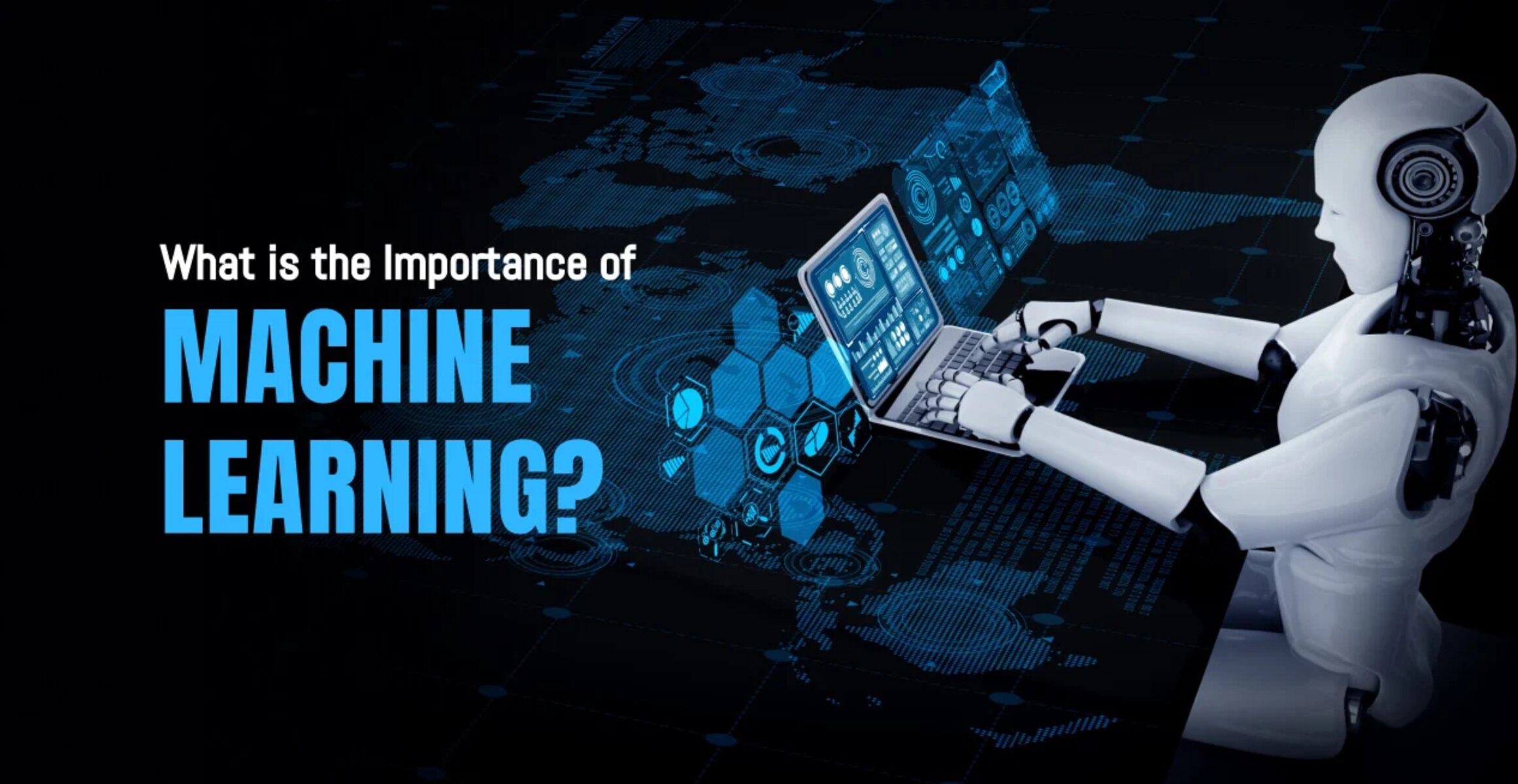Introduction
Data Science and Machine Learning are two terms that have gained significant prominence in recent years. With the advancement of technology and the abundance of data, these fields have become essential for organizations looking to analyze and derive insights from their data. While the terms are often used interchangeably, there are distinct differences between Data Science and Machine Learning.
Data Science is a multidisciplinary field that involves the extraction, interpretation, and analysis of large volumes of structured and unstructured data. It encompasses various techniques, such as data mining, statistical analysis, and predictive modeling, to uncover patterns, create visualizations, and make actionable recommendations. Data Science involves the entire process of data collection, cleansing, analysis, and interpretation, with a focus on extracting meaningful insights and solving complex business problems.
Machine Learning, on the other hand, is a subset of Data Science that focuses on building algorithms and models that can learn from data and make predictions or take actions without being explicitly programmed. It uses statistical techniques to train these models on historical data and enable them to make accurate predictions or classifications on new, unseen data. Machine Learning algorithms are designed to learn from experience and improve their performance over time, making them ideal for tasks such as image recognition, natural language processing, and recommendation systems.
The scope of Data Science is broad and encompasses various domains, including finance, healthcare, marketing, and e-commerce. Data Scientists use their expertise in programming, statistics, and domain knowledge to extract insights and make data-driven decisions. They work with complex datasets, utilize advanced analytics tools, and employ visualization techniques to identify patterns, trends, and correlations that can drive business strategies and enhance operational efficiency.
On the other hand, Machine Learning has a narrower focus and is primarily concerned with developing algorithms and models that can perform specific tasks, such as speech recognition or fraud detection. Machine Learning engineers and researchers use programming languages like Python or R, along with libraries and frameworks like TensorFlow or Scikit-learn, to train and fine-tune models for specific applications. The emphasis is on developing algorithms that can automatically learn and adapt from data, without the need for explicit programming instructions.
Definition of Data Science
Data Science is a multidisciplinary field that involves the extraction, interpretation, and analysis of large volumes of structured and unstructured data. It combines various techniques, including statistics, programming, and domain knowledge, to uncover patterns, gain insights, and make data-driven decisions.
In simple terms, Data Science is the art of turning raw data into meaningful information. It involves collecting and organizing data from various sources, cleaning and preparing it for analysis, and applying statistical models and algorithms to derive insights and solve complex problems. Data Scientists utilize their expertise in mathematics, statistics, and computer science to extract actionable insights and drive decision-making processes.
Data Science encompasses a wide range of techniques and methodologies, such as data mining, predictive modeling, machine learning, and data visualization. It involves understanding the data and its context, identifying relevant features and patterns, and using statistical techniques to analyze and interpret the data. Data Scientists use programming languages like Python, R, or SQL to manipulate, analyze, and visualize data, as well as to build and deploy models and algorithms.
The goal of Data Science is to uncover hidden patterns, trends, and relationships in data that can provide valuable insights and drive informed decision-making. It is not limited to a specific industry or domain and is applicable in various areas such as finance, healthcare, marketing, retail, and social media.
Data Scientists play a crucial role in organizations by providing insights that can help optimize processes, drive innovation, improve customer experiences, and gain a competitive edge. They work closely with domain experts and stakeholders to understand business needs, identify data-driven opportunities, and develop solutions using advanced analytics techniques.
In summary, Data Science involves the application of statistical techniques, programming skills, and domain knowledge to analyze large volumes of data and derive meaningful insights. It is a multidisciplinary field that plays a vital role in helping organizations make data-driven decisions and extract actionable information from their data assets.
Definition of Machine Learning
Machine Learning is a subset of Artificial Intelligence (AI) that focuses on the development of algorithms and models that can learn from data and improve their performance over time without being explicitly programmed. It involves the use of statistical techniques to enable computers to automatically learn patterns, make predictions, or take actions from data.
In essence, Machine Learning is about teaching computers to learn and make decisions or predictions based on data, much like humans do. It relies on algorithms that iteratively learn from data, identify patterns, and make accurate predictions or classifications on new, unseen data. Unlike traditional programming, where explicit instructions are provided, Machine Learning algorithms learn from experience and adapt their behavior as they encounter new examples.
Machine Learning can be broadly categorized into three types: supervised learning, unsupervised learning, and reinforcement learning. In supervised learning, the algorithm is trained on labeled data, where the desired outcome is provided, such as classifying an email as spam or not spam. Unsupervised learning involves training algorithms on unlabeled data to identify patterns or group similar data points together. Reinforcement learning uses a trial-and-error approach, where the algorithm learns through interactions with an environment and receives feedback or rewards for its actions.
Machine Learning has found applications in various domains, such as image recognition, natural language processing, recommendation systems, fraud detection, and self-driving cars. It has revolutionized industries by enabling machines to perform complex tasks more accurately and efficiently than traditional programming methods.
Machine Learning algorithms can be implemented using programming languages like Python, R, or Java, along with libraries and frameworks like TensorFlow, Scikit-learn, or PyTorch. These tools provide the necessary building blocks to train, test, and validate models, as well as deploy them in real-world applications.
The potential of Machine Learning lies in its ability to automate decision-making processes, uncover hidden patterns in data, and make accurate predictions, leading to improved efficiency, productivity, and business outcomes. It allows organizations to leverage their vast amounts of data to gain actionable insights and make data-driven decisions.
In summary, Machine Learning is a branch of Artificial Intelligence that focuses on developing algorithms and models that can learn from data and make predictions or take actions without explicit programming. It relies on statistical techniques to enable computers to learn from experience and improve their performance over time.
Scope of Data Science
The scope of Data Science is vast and encompasses various domains and industries. As the world becomes increasingly data-driven, the demand for skilled Data Scientists continues to grow. The applications of Data Science are far-reaching, and its impact can be seen in diverse areas such as finance, healthcare, marketing, e-commerce, social media, and more.
Data Science involves the entire process of handling data, from data acquisition and cleansing to analysis and interpretation. Data Scientists work with large volumes of structured and unstructured data, utilizing various tools and technologies to extract meaningful insights and solve complex problems. They employ statistical techniques, machine learning algorithms, and data visualization to make data-driven decisions.
In the financial sector, Data Science plays a vital role in fraud detection, risk assessment, and algorithmic trading. It helps financial institutions analyze large datasets to identify patterns and anomalies, enabling them to detect fraudulent activities and minimize risks. Data Science also enables the development of predictive models that can forecast market trends, optimize investment strategies, and enhance financial decision-making.
In healthcare, Data Science is used to improve patient outcomes, optimize healthcare operations, and conduct medical research. It helps in analyzing patient data to identify patterns and risk factors, develop personalized treatment plans, and support early disease detection. Data Science also plays a crucial role in genomics research, drug discovery, and clinical trials, where large-scale data analysis is essential.
Marketing and e-commerce industries rely heavily on Data Science to understand customer behavior, personalize marketing campaigns, and optimize pricing and product recommendations. Data Scientists analyze customer data, including browsing patterns, purchase history, and demographics, to create targeted marketing strategies that increase customer engagement and drive sales. Data Science also enables businesses to leverage customer insights for demand forecasting, inventory management, and supply chain optimization.
In the realm of social media, Data Science is instrumental in sentiment analysis, social network analysis, and recommendation systems. It helps companies extract valuable information from social media platforms to understand customer sentiment, identify emerging trends, and make data-driven decisions. Data Scientists use advanced techniques to analyze user interactions, network structures, and content engagement, providing actionable insights to improve user experiences and drive engagement.
Overall, the scope of Data Science is expanding rapidly as organizations recognize the importance of leveraging data to gain a competitive advantage. With the increasing availability of data and advancements in technology, Data Science will continue to play a crucial role in driving innovation, optimizing processes, and making data-driven decisions across various industries.
Scope of Machine Learning
The scope of Machine Learning extends across numerous domains and industries, revolutionizing the way we approach tasks that were once considered purely human-driven. Machine Learning has found applications in areas such as image and speech recognition, natural language processing, recommendation systems, autonomous vehicles, and much more.
One of the key areas where Machine Learning excels is in image recognition. Machine Learning algorithms can be trained on millions of labeled images to develop models that can accurately identify objects, faces, or even classify diseases based on medical images. This has implications in healthcare, security, and various other fields where image analysis is critical.
Speech recognition is another significant application of Machine Learning. By training algorithms on extensive datasets, Machine Learning has enabled the development of speech recognition systems that can accurately transcribe spoken language, facilitate voice commands, and even facilitate translation services. This technology has been integrated into virtual assistants, navigation systems, and call center automation.
Natural Language Processing (NLP) is an area within Machine Learning that focuses on enabling computers to understand, interpret, and generate human language. Machine Learning models can be trained on vast amounts of text data to perform tasks such as sentiment analysis, language translation, information extraction, and chatbot development. NLP has widespread applications in customer support, content generation, and data analysis.
Another significant scope of Machine Learning is in recommendation systems. By analyzing user preferences and historical data, Machine Learning algorithms can provide personalized recommendations for products, movies, books, and more. This enhances customer experiences, increases engagement, and drives sales for e-commerce platforms, entertainment streaming services, and online marketplaces.
Machine Learning also plays a pivotal role in the development of autonomous vehicles. By training models on sensor data from cameras, lidar, and radar, Machine Learning algorithms can enable self-driving cars to perceive and interpret the environment, make decisions, and navigate safely. This technology has the potential to revolutionize transportation, improve road safety, and enhance accessibility.
The scope of Machine Learning is vast and continually expanding. From finance to healthcare, retail to manufacturing, and every industry in between, Machine Learning has the potential to transform operations, enable intelligent decision-making, and unlock valuable insights from data. Organizations are leveraging Machine Learning techniques to optimize processes, increase efficiency, and gain a competitive edge.
As technology continues to evolve and new algorithms and models are developed, the scope of Machine Learning will only grow. It is a dynamic field that holds immense potential for innovation and disruption, with applications in areas we may not even imagine yet.
Overlapping Areas
Data Science and Machine Learning share several overlapping areas where they converge and complement each other. While they are distinct fields, they often work hand in hand to obtain maximum value from data and enable intelligent decision-making.
One of the key overlapping areas is in data preparation and preprocessing. Both Data Science and Machine Learning require clean and structured data for accurate analysis and model training. Data Scientists and Machine Learning engineers often collaborate to preprocess data, handle missing values, normalize data, and transform variables to ensure the quality and integrity of the dataset.
Data visualization is another overlapping area between Data Science and Machine Learning. Visualizations are powerful tools for data exploration, pattern identification, and insight communication. Data Scientists and Machine Learning experts employ various visualization techniques to present findings, validate models, and communicate results effectively to stakeholders.
Feature engineering is an essential aspect that overlaps in both fields. It involves the selection, extraction, and transformation of relevant features from raw data to serve as inputs for models. Data Scientists and Machine Learning engineers collaborate to identify informative features that can enhance the performance and interpretability of models.
Evaluation and validation of models are central to both Data Science and Machine Learning. Both fields utilize metrics and techniques to assess the performance of models and ensure their accuracy and generalizability. Data Scientists and Machine Learning practitioners employ techniques such as cross-validation, train-test splits, and performance metrics to validate and refine their models.
Lastly, the iterative nature of both Data Science and Machine Learning involves an ongoing process of exploration, experimentation, and refinement. Data Scientists and Machine Learning engineers continuously work together to improve models, fine-tune hyperparameters, and optimize their approaches based on feedback and insights gained from the data.
Although there are overlapping areas between Data Science and Machine Learning, it is important to recognize their distinct focuses. Where Data Science encompasses a broad range of techniques and methodologies to extract insights from data, Machine Learning specifically revolves around developing algorithms and models that can learn from data and make predictions or take actions.
By leveraging the overlapping areas effectively, organizations can harness the power of Data Science and Machine Learning to gain a deeper understanding of their data, make accurate predictions, and derive actionable insights that drive business success.
Differences Between Data Science and Machine Learning
Data Science and Machine Learning, while related, are distinct fields with different focuses and approaches. Understanding the differences between the two is crucial for grasping their individual contributions to data analysis and decision-making.
Data Science encompasses a broader scope, involving the entire process of extracting, interpreting, and analyzing large volumes of data. It involves various techniques, such as data mining, statistical analysis, and predictive modeling, to uncover patterns, gain insights, and solve complex problems. Data Scientists use their expertise in programming, statistics, and domain knowledge to extract insights and make data-driven decisions.
On the other hand, Machine Learning is a subset of Data Science that focuses specifically on developing algorithms and models that can learn from data and make predictions or take actions without explicit programming. Machine Learning algorithms are trained on historical data to learn patterns and relationships, and then make accurate predictions on new, unseen data. It is a more focused approach with the goal of automating decision-making processes.
The primary difference lies in their objectives. Data Science aims to extract meaningful insights and solve complex problems by analyzing data from various sources. It focuses on discovering patterns, trends, and correlations that can drive business strategies and enhance operational efficiency. Machine Learning, on the other hand, is primarily concerned with developing algorithms and models that can learn from data to make accurate predictions or take actions without human intervention.
In terms of techniques and methodologies, Data Science involves a wider array of tools and approaches. It encompasses statistical analysis, data visualization, data mining, and various predictive modeling techniques such as regression analysis, time series analysis, and clustering. Machine Learning, on the other hand, focuses on algorithm development and model training using techniques like supervised learning, unsupervised learning, and reinforcement learning.
Data Science often requires a solid understanding of the entire data pipeline, including data collection, cleaning, preprocessing, and exploratory analysis. It involves expertise in statistical analysis and domain knowledge to interpret findings accurately. Machine Learning, on the other hand, requires proficiency in algorithm development, model selection, hyperparameter tuning, and evaluation techniques. It relies heavily on programming skills, knowledge of machine learning frameworks, and the ability to work with large datasets.
While Data Science and Machine Learning have overlapping areas, it is essential to recognize their distinct focuses. Data Science encompasses the entire process of extracting insights and solving complex problems using various techniques and methodologies. Machine Learning, on the other hand, specifically deals with developing models that can automatically learn from data and make predictions or take actions.
Both fields play integral roles in leveraging the power of data. Data Science enables organizations to extract insights and make data-driven decisions, while Machine Learning automates decision-making processes and enables accurate predictions. By harnessing the strengths of both disciplines, organizations can unlock the full potential of their data and drive innovation and growth.
Applications of Data Science
Data Science has a wide range of applications across various industries, making it a versatile and invaluable field in today’s data-driven world. Here are some of the key applications of Data Science:
- Finance: In the financial sector, Data Science is used for fraud detection, risk assessment, algorithmic trading, and customer segmentation. Data Scientists analyze large datasets to identify patterns and anomalies, enabling them to detect fraudulent activities and minimize risks. Data Science also helps in developing predictive models that can forecast market trends, optimize investment strategies, and enhance financial decision-making.
- Healthcare: Data Science plays a crucial role in healthcare, improving patient outcomes, optimizing healthcare operations, and supporting medical research. It helps in analyzing patient data to identify patterns and risk factors, develop personalized treatment plans, and support early disease detection. Data Science also contributes to genomics research, drug discovery, and clinical trials, where large-scale data analysis is essential.
- Marketing and E-commerce: Data Science is extensively used in marketing and e-commerce industries to understand customer behavior, personalize marketing campaigns, and optimize pricing and product recommendations. Data Scientists analyze customer data to create targeted marketing strategies that increase customer engagement and drive sales. Additionally, Data Science helps businesses leverage customer insights for demand forecasting, inventory management, and supply chain optimization.
- Social Media: Data Science plays a vital role in analyzing social media data, enabling sentiment analysis, social network analysis, and recommendation systems. It helps companies extract valuable information from social media platforms to understand customer sentiment, identify emerging trends, and make data-driven decisions. This information is instrumental in improving user experiences, driving engagement, and enhancing marketing strategies.
- Transportation: In the transportation industry, Data Science is used for route optimization, traffic prediction, and demand forecasting. Data Scientists analyze data from various sources, such as GPS data and traffic sensors, to identify efficient routes, predict congestion, and optimize transportation operations. This improves efficiency, reduces travel time, and enhances overall transportation experiences.
These are just a few examples of the wide range of applications for Data Science. It is a field that continues to evolve and find new applications as technology advances and more data becomes available. Data Science has the potential to transform industries, drive innovation, and improve decision-making processes, making it an essential discipline in today’s data-driven world.
Applications of Machine Learning
Machine Learning has emerged as a powerful tool with a wide range of applications across various industries. Its ability to learn from data and make predictions or take actions has revolutionized numerous domains. Here are some key applications of Machine Learning:
- Image and Speech Recognition: Machine Learning algorithms have been instrumental in advancing image and speech recognition technologies. They are used to develop models that can accurately identify objects and faces in images, transcribe spoken language, and facilitate language translation. Applications include facial recognition systems, virtual assistants, and automated transcription services.
- Natural Language Processing (NLP): Machine Learning plays a crucial role in NLP, enabling computers to understand, interpret, and generate human language. It is used for sentiment analysis, language translation, chatbot development, and information extraction. NLP applications include customer service automation, content generation, and data analysis.
- Recommendation Systems: Machine Learning powers recommendation systems that provide personalized suggestions to users based on their preferences and behavior. These systems are widely used in e-commerce platforms, streaming services, and social media platforms, enhancing customer experiences, increasing engagement, and driving sales.
- Autonomous Vehicles: Machine Learning plays a vital role in the development of autonomous vehicles. Models are trained on sensor data from cameras, lidar, and radar to enable self-driving cars to perceive and interpret the environment, make decisions, and navigate safely. Applications include self-driving cars and advanced driver assistance systems.
- Fraud Detection: Machine Learning is employed in fraud detection systems to identify fraudulent activities and transactions. By learning patterns from historical data, machine learning algorithms can detect anomalies and alert organizations to potential instances of fraud, reducing financial losses and enhancing security.
Additionally, Machine Learning is applied in various other fields such as financial forecasting, healthcare diagnosis, predictive maintenance, energy optimization, and market segmentation. It is revolutionizing industries by automating processes, making accurate predictions, and enabling intelligent decision-making.
As technology continues to advance and more data becomes available, the possibilities for applying Machine Learning are limitless. The field continues to grow and evolve, with new algorithms and techniques being developed and applied across various domains. Machine Learning has the potential to transform industries, improve efficiency, and drive innovation in the years to come.
Conclusion
Data Science and Machine Learning are two closely related fields that play a significant role in today’s data-driven world. While they have distinct focuses and methodologies, they often work hand in hand to leverage the power of data in order to drive innovation, optimize processes, and make informed decisions.
Data Science encompasses the entire process of extracting, interpreting, and analyzing data, using statistical techniques and programming skills to derive meaningful insights. It enables organizations to understand patterns, uncover trends, and solve complex problems across various industries.
Machine Learning, on the other hand, focuses specifically on developing algorithms and models that can learn from data and make accurate predictions or take actions. It automates decision-making processes and has applications in image and speech recognition, natural language processing, recommendation systems, and autonomous vehicles.
While both Data Science and Machine Learning have distinct applications and techniques, they share overlapping areas where they converge and complement each other. Data preparation, visualization, feature engineering, model evaluation, and the iterative nature of the two fields are examples of such overlapping areas.
The applications of Data Science and Machine Learning are vast and diverse, spanning industries such as finance, healthcare, marketing, transportation, and social media. They empower organizations to extract actionable insights, make data-driven decisions, and gain a competitive edge in their respective fields.
As technology continues to advance and the volume of data continues to increase, the fields of Data Science and Machine Learning will become increasingly vital. Leveraging these disciplines effectively will enable organizations to unlock the full potential of their data, drive innovation, and thrive in an ever-evolving, data-centric world.

























